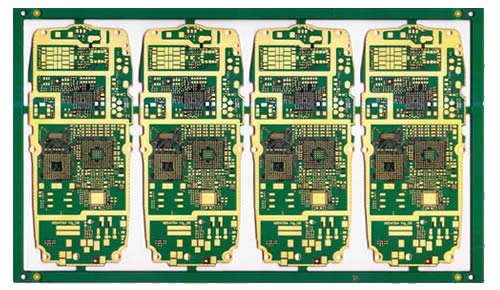In PCB design, the layout and quality analysis of high-speed signal boards are undoubtedly the focus of discussion among engineers. Especially nowadays PCB boards have higher and higher operating frequencies. For example, it is very common for general digital signal processing (DSP) PCB boards to apply frequencies between 150-200MHz. It is not surprising that the CPU board reaches above 500MHz in practical applications. The design of Ghz circuits in the communications industry has become very popular. The design of all these PCB boards is often realized by multi-layer board technology. In the multi-layer board design, it is inevitable to adopt the design technology of the power layer. However, in the design of the power layer, the design becomes very complicated due to the mixed application of multiple types of power sources.
So what are the problems that linger among PCB engineers? How to define the number of PCB layers? How many layers are included? How to arrange the content of each layer in the most reasonable way? If there should be several layers of ground, how to alternately arrange signal layers and ground layers, etc.

How to design a variety of power supply block systems? Such as 3.3V, 2.5V, 5V, 12V and so on. The reasonable division of the power layer and the common ground problem are a very important factor for the stability of the PCB.
How to design decoupling capacitors? Using decoupling capacitors to eliminate switching noise is a common method, but how to determine its capacitance? Where is the capacitor placed? When to use what type of capacitor and so on.
How to eliminate ground bounce noise? How does ground bounce noise affect and interfere with useful signals? How to eliminate Return Path noise? In many cases, the unreasonable circuit design is the key to the failure of the circuit, and the circuit design is often the job that engineers find helpless.
How to reasonably design the current distribution? Especially the design of current distribution in the ground layer is very difficult, and if the total current is distributed unevenly in the PCB board, it will directly and obviously affect the unstable operation of the PCB board.
In addition, there are some common signal problems such as overshoot, undershoot, ringing (oscillation), time delay, impedance matching, glitches, etc., but these problems are inseparable from the above problems. There is a causal relationship between them.
In general, the design of a high-quality high-speed signal board should be considered in terms of signal integrity (SI---Signal Integrity) and power integrity (PI---Power Integrity). Although the more direct result is manifested in signal integrity, we must not neglect the design of power integrity in terms of its causes. Because power integrity directly affects the signal integrity of the final high-speed signal board.
There is a very big misunderstanding among PCB engineers, especially those who have used traditional EDA tools for high-speed PCB design. Many engineers have asked us: "Why are the results analyzed by the SI signal integrity tool of the EDA inconsistent with the actual test results of our instruments, and the results of the analysis are often ideal?" In fact, this question is very simple. The reason for this problem is: on the one hand, the technical staff of the EDA manufacturer did not explain it clearly; on the other hand, it is the understanding of the simulation results of the PCB designer.
We know that the most commonly used EDA tools in the Chinese market are SI (Signal Integrity) analysis tools. SI is an analysis based on wiring and device models without considering the influence of power supply, and most of them even analog devices. Regardless of (it is assumed to be ideal), it is conceivable that such analysis results and actual results must be in error. Because in most cases, the impact of power integrity in PCB boards is more serious than SI.